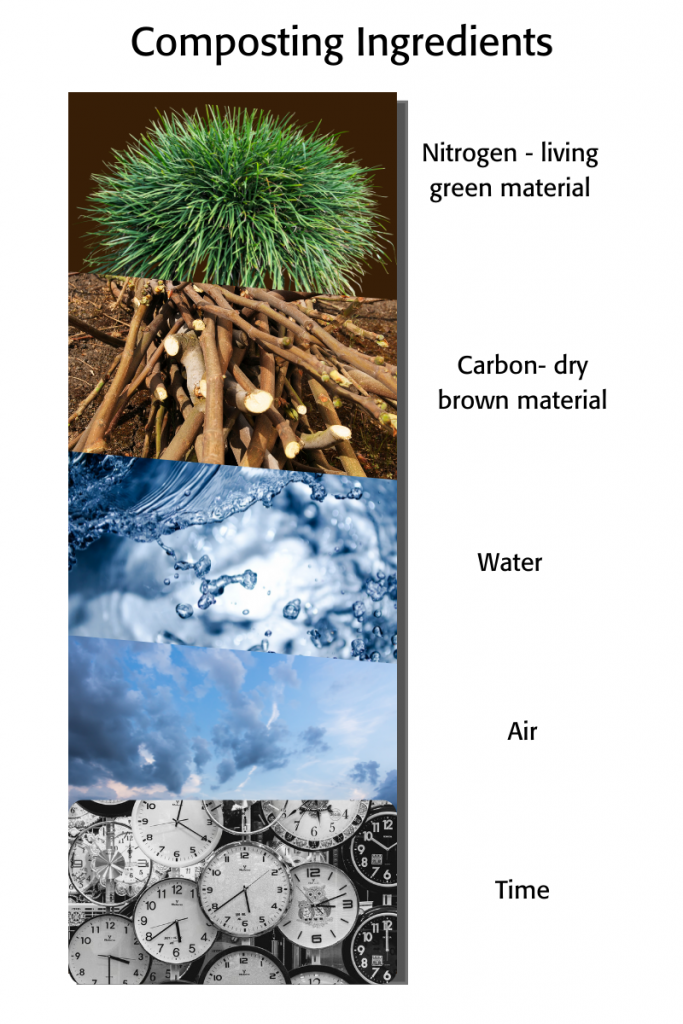Home Composting
Many types of food waste and yard waste can be composted at home, including grass clippings, tree and shrub trimmings, vegetable garden and fruit tree waste, lawn clippings, autumn leaves, coffee grounds, and fruit and vegetable scraps from the kitchen. Home composters should not attempt to compost meat, dairy, fats, oils, grease, compostable products, or large amounts of baked goods because these items attract pests and do not readily decompose in backyard compost bins.
Home composting can be done in an enclosed bin or tumbler, in an easily made bunker, or using a no-fuss pile.
The City of Oxnard offers recycled plastic compost bins for $30. Limit one per household. For Oxnard residents only. Email recycle@oxnard.org or call 805-385-8060 to inquire about alternative arrangements.
Even if you compost at home or your business, you are still required to participate in the city’s organics/food scraps program. For more information on those requirements, please CLICK HERE.
Recipe for Home Composting
 The four basic ingredients for composting are nitrogen, carbon, water, and air. The easiest compost recipe calls for blending roughly equal parts of green or wet material (which is high in nitrogen) and brown or dry material (which is high in carbon). Simply layer or mix these materials in a pile or enclosure; chop or shred large pieces to 12″ or shorter. Water and fluff the compost to add air. Then leave it to the microorganisms, which will break down the material over time.
The four basic ingredients for composting are nitrogen, carbon, water, and air. The easiest compost recipe calls for blending roughly equal parts of green or wet material (which is high in nitrogen) and brown or dry material (which is high in carbon). Simply layer or mix these materials in a pile or enclosure; chop or shred large pieces to 12″ or shorter. Water and fluff the compost to add air. Then leave it to the microorganisms, which will break down the material over time.
Composting Techniques
Composting can be done with more effort and faster results–or can be done with less labor, which will take longer and may not kill all weed seeds.
- Hot composting: Compost piles that have the right blend of nitrogen (greens) and carbon (browns), and are kept moist and fluffed regularly, will heat up fast, stay hot, and destroy most weed seeds and pathogens. With faster decomposition, the compost may be ready in 2 to 3 months. Once the pile is fully built, new material is not added, so proper hot composting requires more than one pile.
- Slow composting: Compost will happen even if you just pile up organic waste, water sporadically, and wait. Since this type of pile won’t get too hot and is turned infrequently, breakdown will be slower and less even. Weed seeds and compost-resistant materials, such as tags, plastic, and/or wax-coated paper, may survive. Worms and other insects, which cannot survive high heat decomposition may be able to live in these piles and help break down the material. Casual composting can take up to a year.
- Vermicomposting: Composting with the aid of worms.
Troubleshooting a Home Composting Bin or Pile
| Symptom | Problem(s) | Solution(s) | ||
|---|---|---|---|---|
| The pile smells bad | Not enough air OR too much moisture |
Turn the pile if not enough air
Add dry materials if too moist |
||
| The pile will not heat up | Not enough moisture OR Pile size is too small OR Lack of nitrogen-rich material OR Particle size is too big |
Add water if dry
Build pile to at least 3′ x 3′ x 3′ Mix in grass clippings or fruit/vegetable scraps Chip or grind materials |
||
| The pile attracts flies, rodents, or pets | Pile contains bones, meat, fatty or starchy foods, or animal manure | Alter materials added to pile; bury fruit/vegetable scraps in the middle of the pile, or under 8″ to 10″ inches of soil, or compost them in a worm bin. | ||
| Pile has slugs in it (and so does garden) | Pile is easily accessible and provides daytime hiding place and breeding ground for slugs | Remove slugs and slug eggs from pile (eggs look like very small clusters of pearls). Locate compost pile far from vegetable gardens and/or create barriers around pile/garden (for example, traps and copper flashing). |